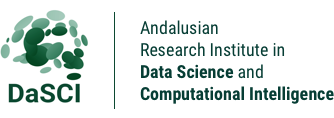Artificial intelligence to ID skeletonized human remains
Brief description
There is a huge and increasing number of unidentified bodies due to natural disasters, terrorism, crimes, or war conflicts. Skeleton-based forensic methods play a significant role in the forensic identification process. These methods represent the first step in every identification process and the last chance for identification when DNA or fingerprints cannot be applied. In particular, craniofacial superimposition is a forensic ID technique intended to determine whether a skull found corresponds to a known individual (the suspected decedent) through the superimposition of the former (a radiograph, photograph, or 3D model) over one or more photographs of the latter and the posterior morphological analysis of their correspondence.
What service(s) are provided?
We are a pioneering research group applying soft computing and computer vision techniques to forensic identification. Our main joint contribution to the field refers to the automation of the craniofacial superimposition technique. A hybridization of computer vision and soft computing resulted in the most advanced computer-aided system to assist the forensic anthropologist in the identification of a missing person by craniofacial superimposition. We transferred this technology to the Face2Skull software (currently provided by our customer, Panacea Coop. Research). It has been already commercialized in Mexico (by Aspelab). Face2Skull has also been used by different Justice Dpts. in Europe and Africa, for forensic ID purposes.
Relationship to digitization
Craniofacial superimposition has been a tedious and time consuming manual technique for decades. Beyond the speed-up, the new software provides the forensic practitioner with a number of objective criteria in order to assess ID by craniofacial superimposition.
Customer and details
Panacea Cooperative Research.
Spain
EN: https://www.panacea-coop.com





